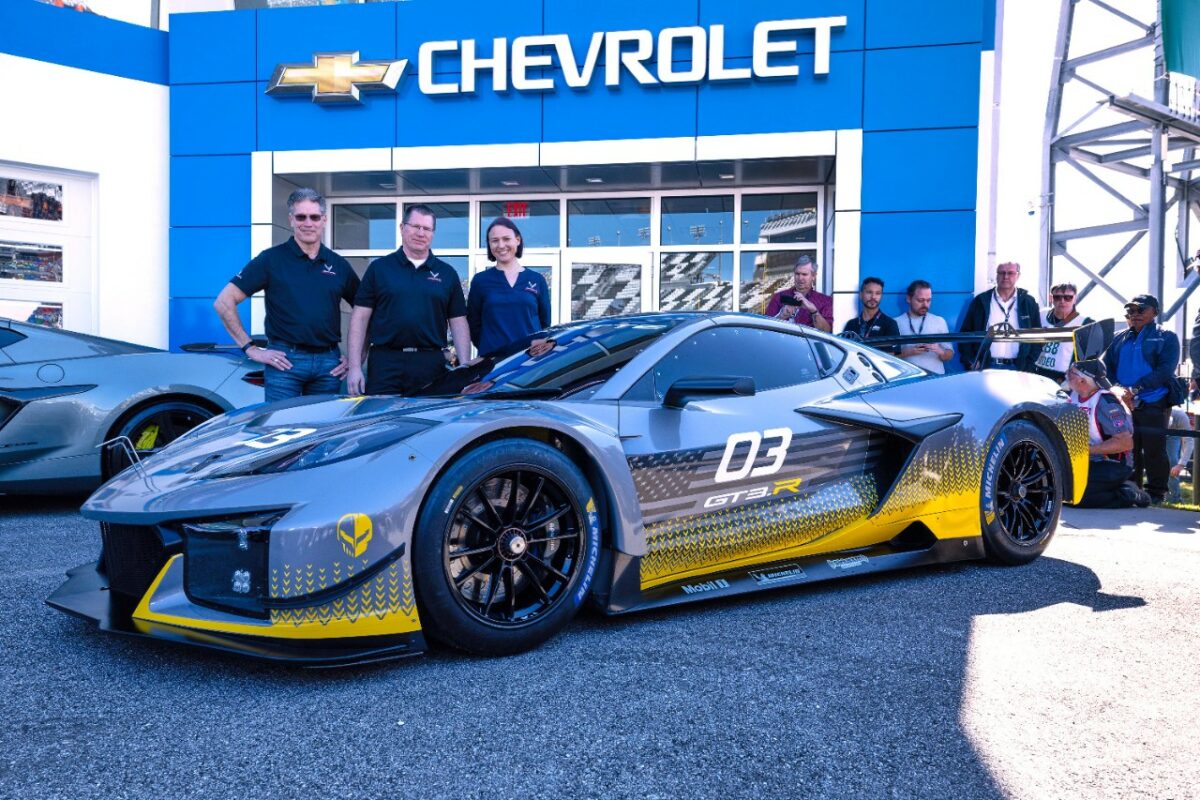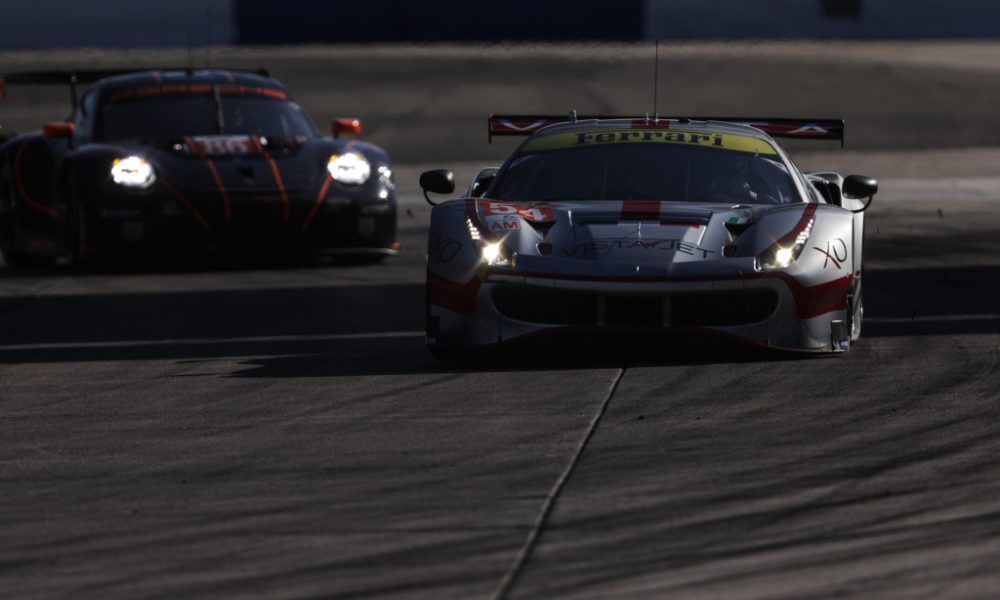Against the backdrop of the world’s most famous endurance race, Ford Performance today fully unveiled the highly anticipated Mustang GT3 a year from the company’s return to the 24 Hours of Le Mans.
“Ford and Le Mans are bound together by history,” said Ford Motor Company CEO Jim Farley. “And now we’re coming back to the most dramatic, most rewarding and most important race in the world. It is not Ford versus Ferrari anymore. It is Ford versus everyone. Going back to Le Mans is the beginning of building a global motorsports business with Mustang, just like we are doing with Bronco and Raptor off-road.”
[lawrence-auto-related count=3 category=1416]
While Ford is eager to repeat past success at Le Mans, experienced most recently in 2016 with the GT but going back to its string of victories in the late ’60s with the GT40, it’s the convergence of sports car GT racing under the GT3 platform in 2024 — where GT3 cars can compete at Le Mans and in the World Endurance Championship, the IMSA WeatherTech SportsCar Championship, SRO’s GT World Challenge series around the world and numerous other championships and races — that has driven Ford to jump into the ever-growing GT3 pool.

“It has come about for a lot of different reasons,” explained Mark Rushbrook, Global Director at Ford Performance Motorsports, ahead of the unveiling. “Part of it is internal to our company, and the way that we’re able to value motorsports in new and different ways than before. But also, it’s a lot of what’s happened in the racing world, especially in sports car racing. And with the convergence of the GT classes, we can with one car, one designed and one homologated car, race it globally.
“In factory racing, in IMSA, where it’s appropriate to do it, but around the rest of the world — in series like WEC, including Le Mans, SRO — we can race in true customer racing, getting Mustangs out there for customer teams to compete with. That is great for us, because Mustang is one of our icons. It is a halo for us in many ways. And as we’ve committed to the seventh-generation Mustang for the for the road with a full lineup of vehicles, we’re doing the same thing on the racetrack.”
[lawrence-related id=327906]
Based on the Mustang Dark Horse, the performance pinnacle of the 2024 Mustang lineup, the Mustang GT3 has been developed in conjunction with Multimatic, which will run the car in IMSA GTD PRO competition while Proton Competition campaigns the car in WEC. Development of the 5.4-liter Coyote V8 engine has been carried out by M-Sport, Ford’s partner in the World Rally Championship. The Mustang GT3 features revised engine placement, a bespoke short-long arm suspension, a rear-mounted transaxle, carbon fiber body panels, and a unique aero package. One of the standout elements of that aero package is the swan-neck mount for the rear wing that mounts to the car midway between the rear and the roof.
“It’s very good functionally, to tie into some good structure and provide clean airflow. But it’s also very striking from a visual perspective,” Rushbrook, told RACER, adding on to some other technical elements of the car.

“The fender vents, the way the air is channeled to flow — not just over the car and under the car, but through the car to efficiently get the drag and downforce targets that we need to hit, but also the cooling requirements. And then it’s taking that great Coyote naturally aspirated V8 engine, working with M-Sport as a great engine partner to develop that and hit the power targets that we need to be competitive in the class.
“We’re able to get the engine in the race car a little bit lower, a little bit further rearward to give it better inertia characteristics, lower center of gravity, and reduce the yaw inertia as well. So it’s really working with Multimatic as a great vehicle engineering partner to optimize every system, every component in the car for optimum performance on the track.”
The Mustang GT3 was presented in a colorful Troy Lee-designed livery, complete with new Ford Performance branding that will be featured on all the company’s racing vehicles. Rushbrook says that while Ford Performance doesn’t expect teams to copy the livery, they would love for them to take some common elements from it.

In addition to Proton and Multimatic running the car in their respective championships, Ford Performance hopes to see the car in customers’ hands competing across the world, and the company has fielded inquiries from teams wishing to campaign the car in a variety of championships and races. Rushbrook said the intent is to supply as many cars as demand dictates.
Joining the Mustang GT3, which will make its competition debut at the 2024 Rolex 24 At Daytona, the Mustang Dark Horse will also form the basis of a new GT4 car as well as spawn two other track-only versions, the R and S.




